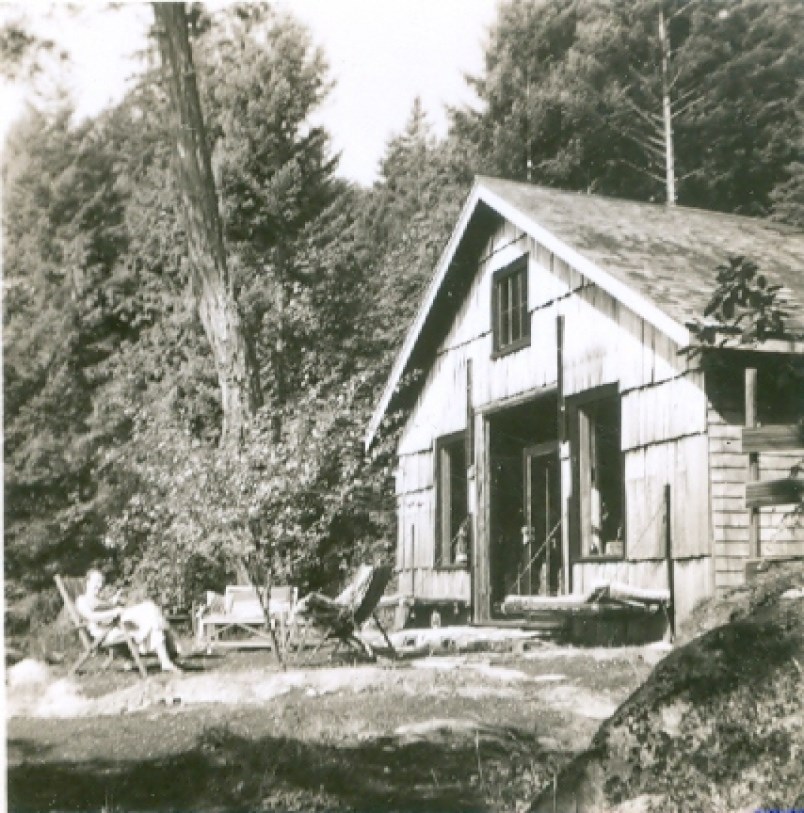At some point, all of the nostalgia over the Union Steamship’s Happy Isle became just too tedious for Bowen’s arty crowd.
All that drinking and three-legged racing and out-of-wedlock recreation meant that very little art was being churned out on the island.
Even then, there was a sense of deprivation, impatient yearning to have lots of artistic stuff around. Implausibly, some believed that eventually it would be necessary to impose a Cultural Masterplan to secure a steady and ample supply of macrame and paper mache fish and sponge sunset murals. They envisioned cases of empty glitter bottles and mummified glue sticks and bins of colourful wearables, silkscreened stuff that no one would wear. Also, most important of all, many, many interpretations of the lighthouse.
So as this desire for serious artistic heritage, an art tradition began to grow, a plan began to hatch. Long before the alien autopsies, before Loch Ness or the Bermuda Triangle, there was Lieben.
The story was so charming. A generous and loveable couple built an artists’ retreat in a funky house on Bowen Island and invited the most celebrated artists and authors to come and stay and work and for years Lieben became an endearing island legend.
Where was Lieben? Some claim that a vacant lot was chosen in Eaglecliffe. It was declared the site of the conveniently-vanished Lieben and was whispered about for decades. No one ever actually checked the location because there was rumour of a deranged hermit with a shotgun. Research was undertaken to seek evidence of visits by arts luminaries. They used the popular reference book, “Notable Canadian Freeloaders: West Coast Edition II” which also had an extensive grant application writing appendix but to no avail.
But surely someone would have seen something? At the time, random rumours were circulated as to which luminaries were visiting and should be left alone because they were doing important things and therefore no one should go snooping around. Beyond that, not even one mildly notable inebriate with typewriters were ever observed in the cove.
So how did Lieben enter our folklore? It could be the late night planting of alleged foundation stones to satisfy the meddlers who insisted on trampling the vacant lot. Recently, it was learned that there has been pressure over the last half century to have the lot designated Canada’s first National Historic Possibility.
But here are the facts.
The concept for his hoax was taken directly from the 1934 classic romance film Rumba. When Joe and Diana learn that they share the same raffle ticket, they decide to start an arts club in Cuba. She brings a drunk with her but dances with Joe by mistake and then decides to become a schoolteacher. The original idea was to cast the couple at Lieben after the George Raft and Carole Lombard characters. But it was decided that names Joe and Diana were too obvious and so consultants were hired and recommended Einar and Muriel, using old phonebook technology. In the final scene, of course, everybody wakes up and it was a dream about a buried treasure in Nova Scotia but that part was omitted.
What a success story Lieben created! Previously, there were few examples of serious art on Bowen.
There was a clamshell ashtray at the Bowmart Cafe, the odd dashbaord religious figure, some framed chocolate box lids, and in the living room of the island’s only college graduate, Vladimir Trechikoff’s “Chinese Girl.”
Since L’Affaire Lieben, the local arts s scene has thrived. Now, Bowen has far too much art. It is stored away in crawl spaces and in old boat hulls. The concern about the island’s artistic excess has grown to a point where the University of Munich currently has a team evaluating the dangerous effect of local stored art which, it is feared, could throw the earth off axis. This is known in geophysical circles as The Bowen Wobble especially if the heavy loom and clay wheel effect sets in. Using atomic clocks, they have now also linked the local art surplus to the nightly phenomenon of many stars moving the wrong way.
Still, this peril has had virtually no effect on the frequency of local show openings and book launches except, perhaps, for the token gesture of trimming the crusts from the little sandwiches.
Perhaps the most conclusive evidence is the name itself. “Lieben” means “love” and comes from the old German tennis term meaning “Nothing.” As in, nothing there. Nothing.
[Editor’s note: Of course this is April Fools! For more information about the real history of Lieben, please visit Bowen Island Museum and Archives’ page.]



